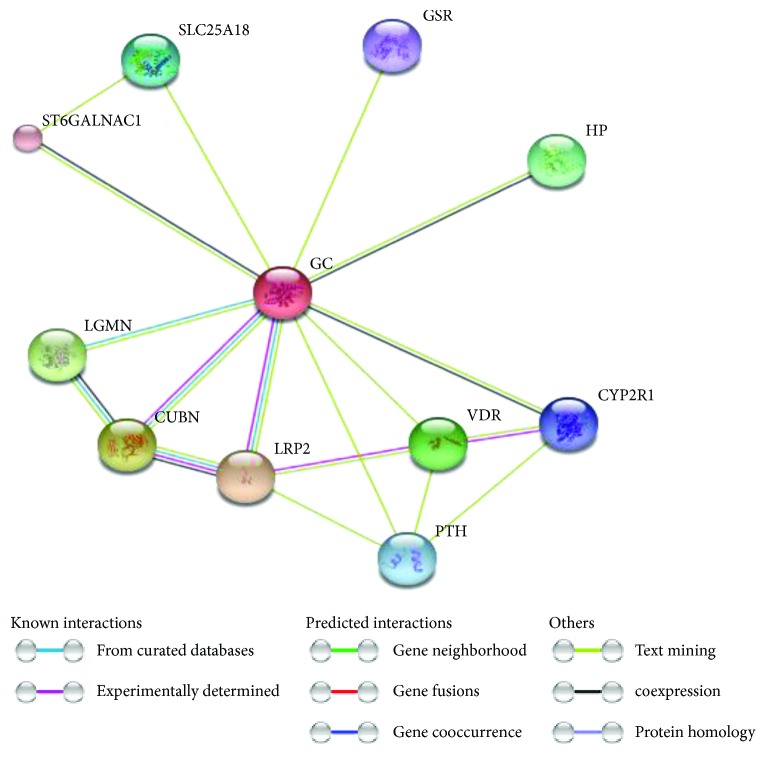Figure 5.
STRING analysis of vitamin D-binding protein (i.e., Gc, group-specific component protein) (accession number P02774) with its predicted functional partners. Network nodes represent proteins; each node represents all the proteins produced by a single, protein-coding gene locus. Edges represent protein-protein associations (i.e., contribute to a shared function; this does not necessarily mean they are physically binding each other). The line colors of the edges indicate the type of interaction evidence that is explained in the figure key (right side). LRP2, low-density lipoprotein receptor-related protein 2 or megalin, is a multiligand endocytic receptor that is expressed in many tissues but primarily in absorptive epithelial tissues such as the kidney; CUBN, cubilin, an intrinsic factor-cobalamin receptor cotransporter which plays a role in lipoprotein, vitamin, and iron metabolism, by facilitating their uptake. LGMN, legumain, has a strict specificity for hydrolysis of asparaginyl bonds required for normal lysosomal protein degradation in renal proximal tubules and plays a role in the regulation of cell proliferation via its role in EGFR degradation; VDR, vitamin D (1,25-dihydroxyvitamin D3), is a nuclear receptor that mediates the action of vitamin D3 by controlling the expression of hormone-sensitive genes and plays a central role in calcium homeostasis; HP, haptoglobin, captures and combines with free plasma hemoglobin to allow hepatic recycling of heme iron and to prevent kidney damage. SLC25A18, solute carrier family 25 (glutamate carrier), is member 18 which involved in glutamate transport with H+ across the inner mitochondrial membrane; PTH, parathyroid hormone; CYP2R1, cytochrome P450, family 2, subfamily R, polypeptide 1 which has a D-25-hydroxylase activity on both forms of vitamin D: D2 and D3. GSR, glutathione reductase, maintains high levels of reduced glutathione in the cytosol. ST6GALNAC1 transfers a sialic acid, N-acetylneuraminic acid (NeuAc), in an alpha-2,6 linkage to O-linked GalNAc residues [data source: https://string-db.org, version 10.5].

